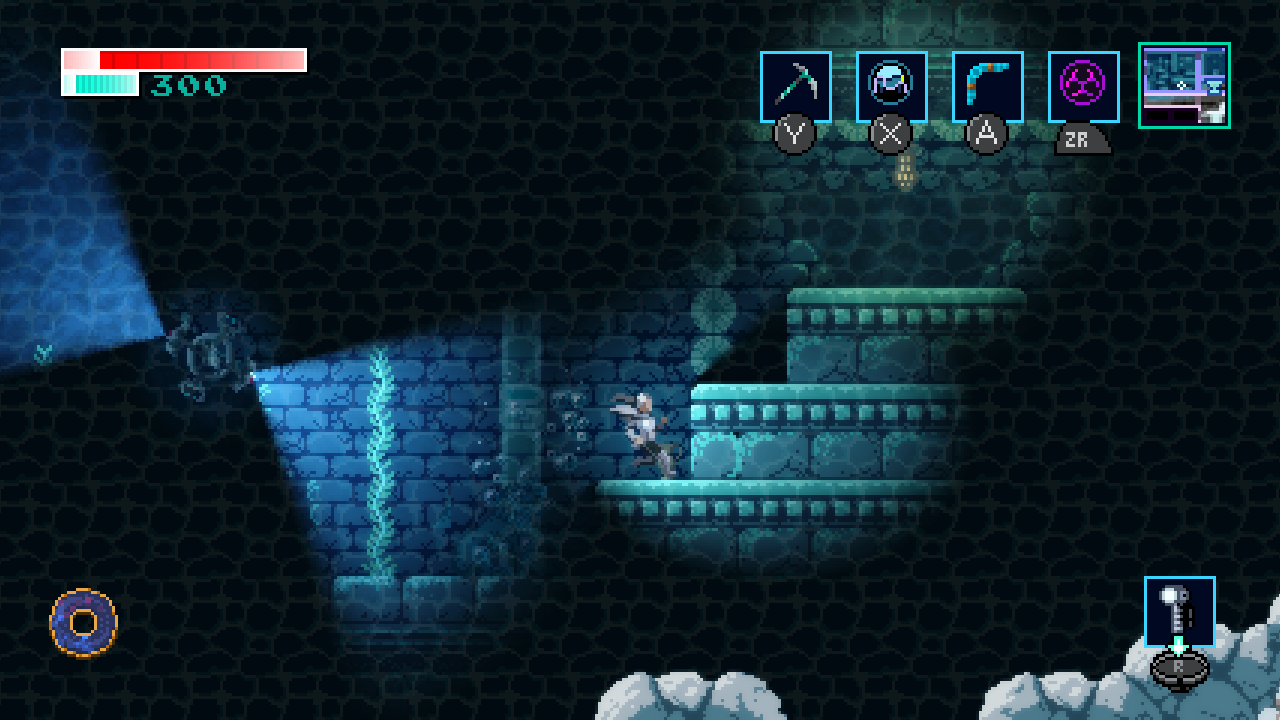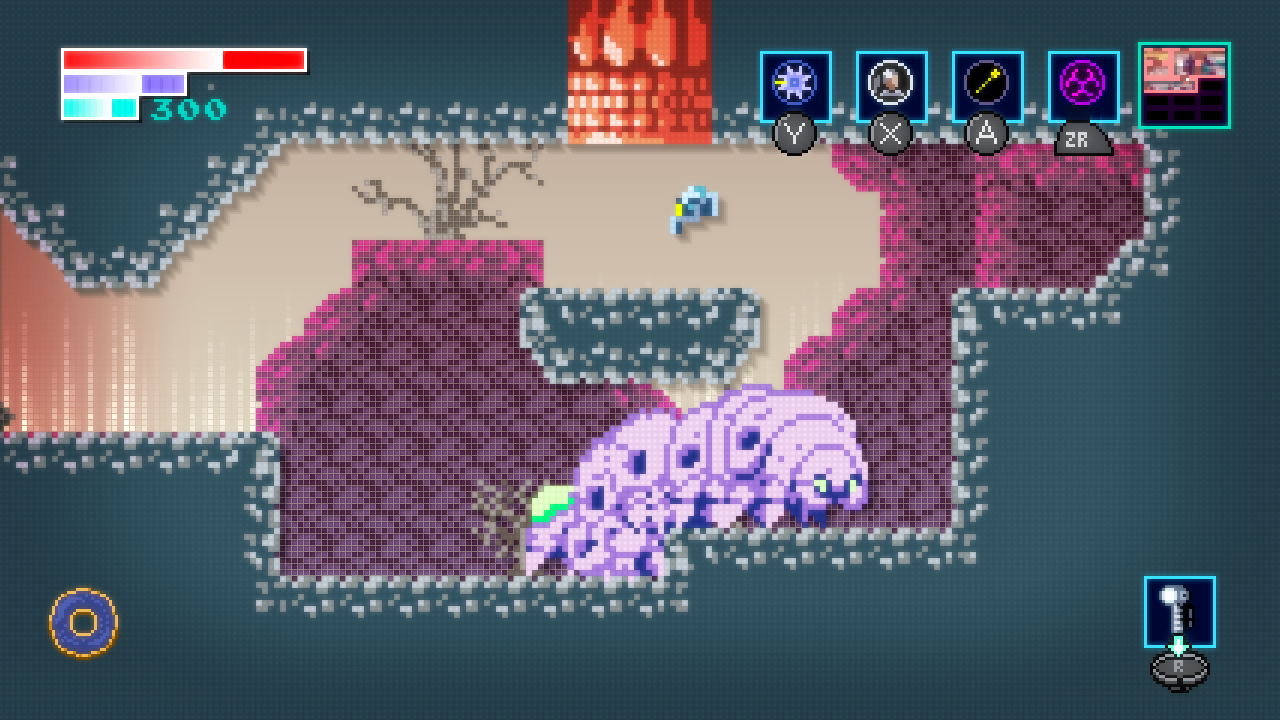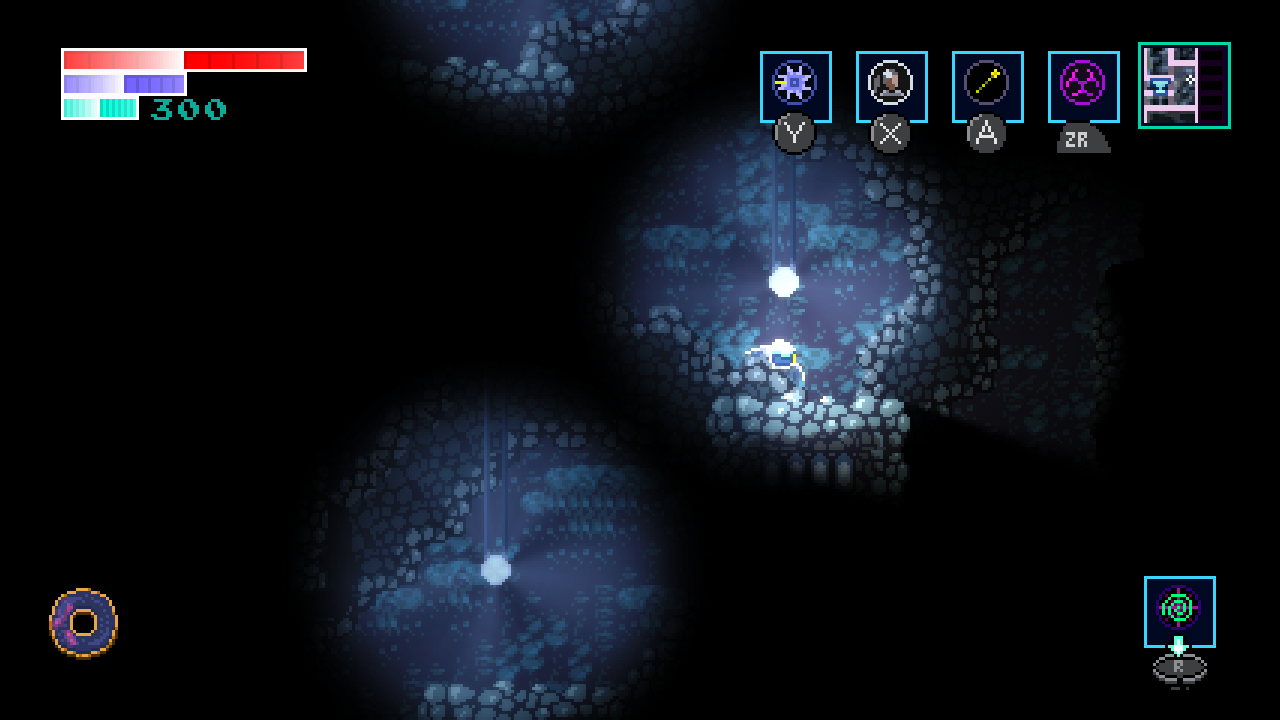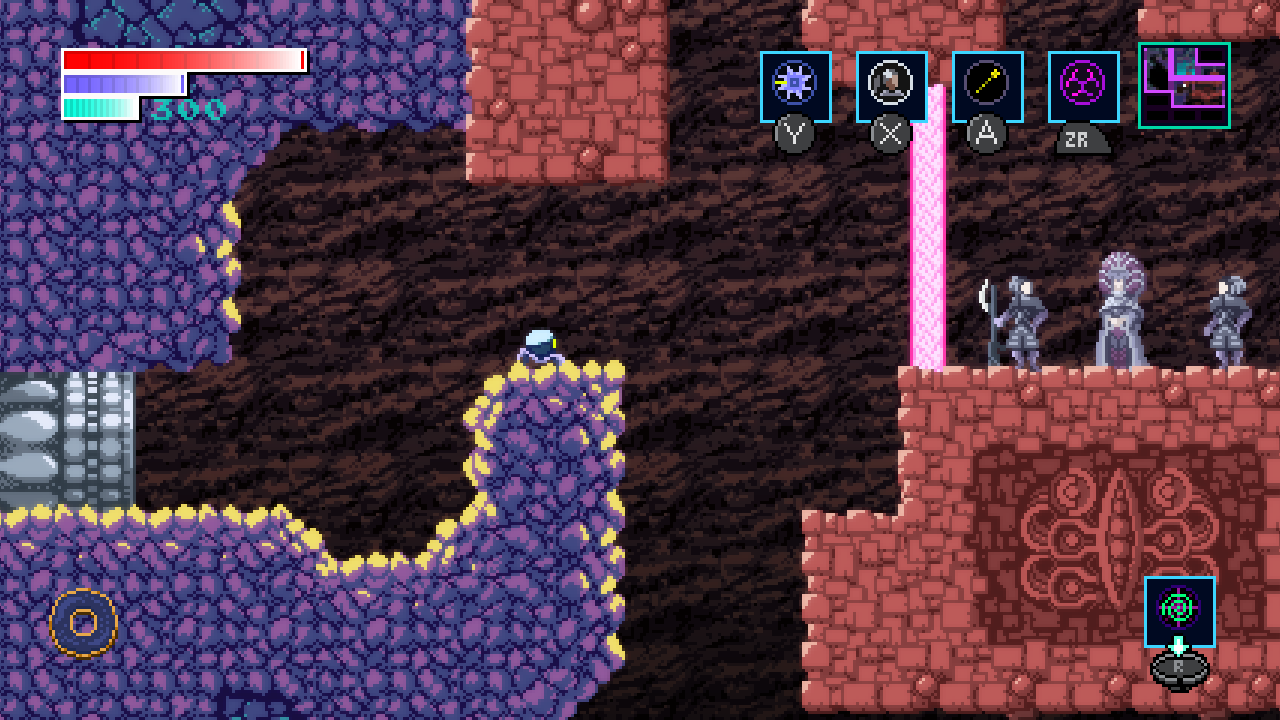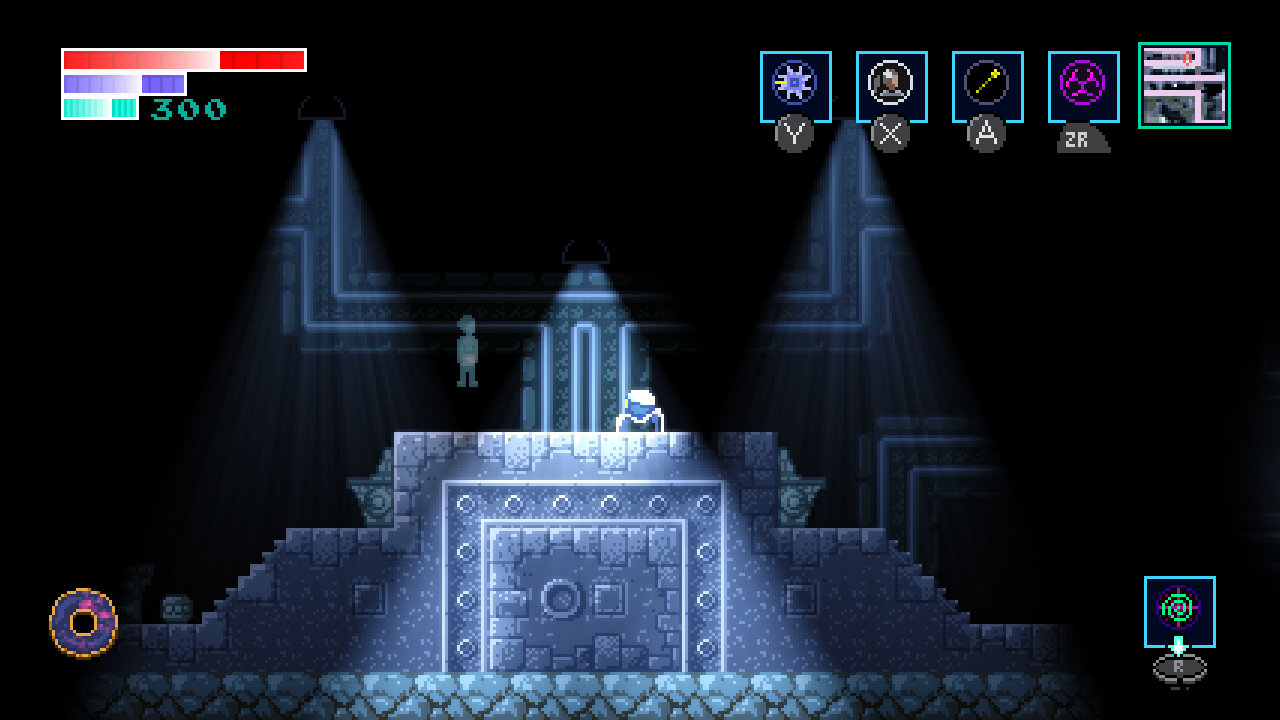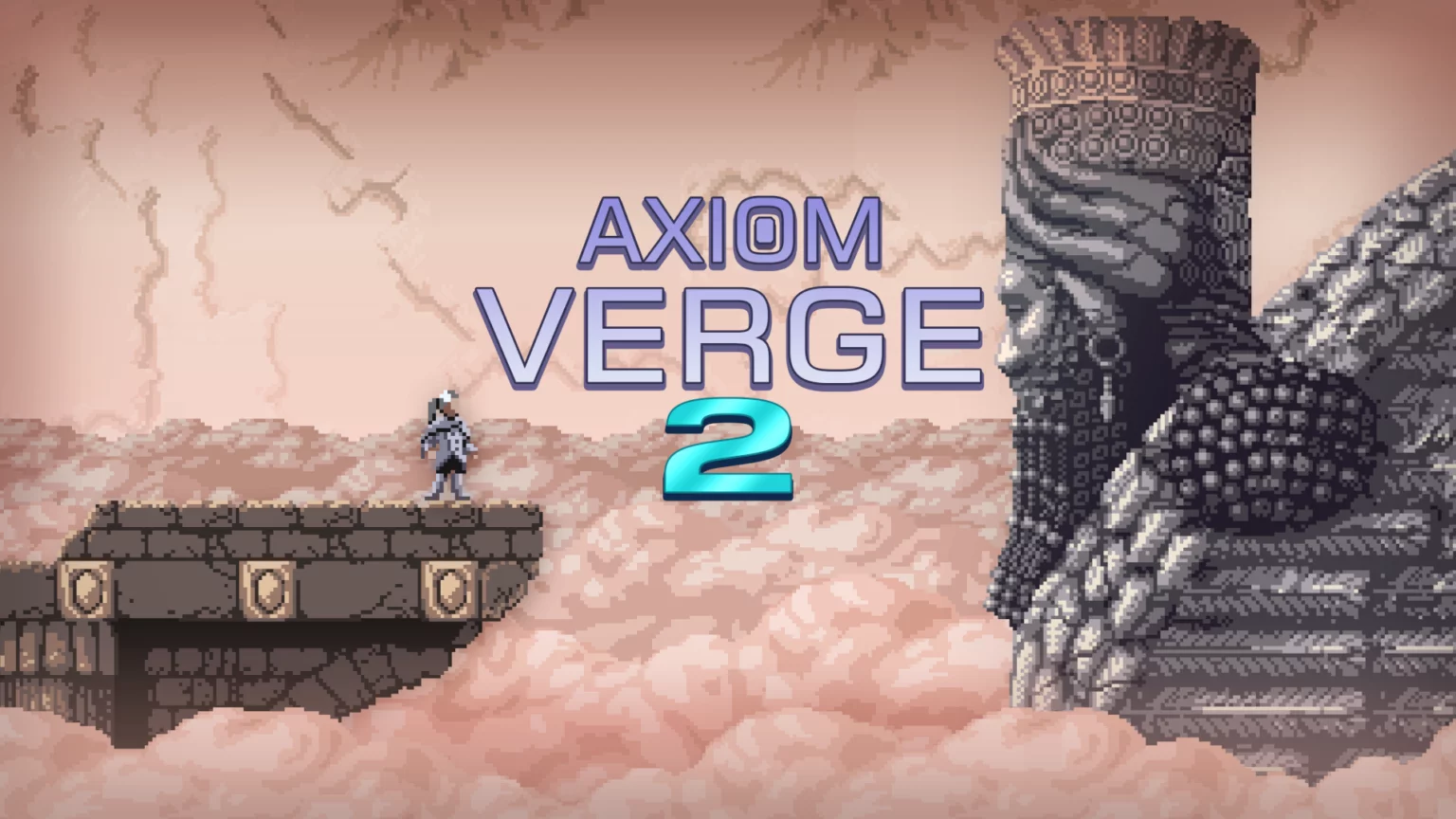The metroidvania has been a beloved genre since the release of the original Metroid way back in 1986 (belated happy birthday to the OG, Samus Aran, by the way!), and there have been some tremendous games released under the banner over the years. One of the first to spring to my mind was the frankly brilliant Axiom Verge; released to critical acclaim in 2015, the gaming community has been waiting with baited breath ever since Thomas Happ Games LLC announced that a sequel was in the works. But with Tom Happ being a completely solo developer and no concrete news on a release schedule, who knew when we could expect Axiom Verge 2 to grace our console screens…
Thomas Happ knew.
Like one of the devilish mysteries hidden in his games, the release was kept a quiet secret and launched entirely unexpectedly as part of the most recent Nintendo Indie World presentation, to an outpouring of excitement from fans. Not ones to hang around when a sequel to a modern classic is released, VGamingNews sent me straight off to the Nintendo eShop to snag a copy on the Switch, eager to bring you the lowdown right off the bat. It’s safe to say that I wasn’t disappointed.
At A Glance
| Scores | |
| Visuals | 8 /10 |
| Sound | 9 /10 |
| Gameplay | 8 /10 |
| Overall | 8/10 |
| Positives | + Stunning pixel art visuals & deep, engaging soundtrack |
| + Expansive map covering a detailed, living world | |
| + Great roster of upgrades that create unique gameplay | |
| Negatives | – Lore is tricky to follow with lots of names, races & places described in a random order |
| – Combat & bosses aren’t especially challenging | |
| – Some of the upgrades quickly become defunct | |
| Launch Price | £16.19 |
| Our Playtime | 15 hours 11 mins |
| Available On | PS4, PS5, Nintendo Switch, PC |
Set in the same universe as the original game, Axiom Verge 2 frames itself as a pseudo-prequel, but considering the reality-flitting nature of the storylines, it makes sure you can’t be entirely confident in that description until nearer the end of the game. You play the role of Indra Chaudhari, a ruthless company CEO who’s dragged into an interdimensional revenge story while investigating a sinister message relating to her estranged daughter, seemingly sent from by Indra’s former business rival, Dr Elizabeth Hammond. Lured to a research lab deep in the Antarctic, where Hammond herself once vanished without trace, Indra becomes trapped in another dimension. Wanting nothing more than to find her way home alongside her daughter, she’s led on a merry dance before falling victim to an ancient evil that threatens reality itself.
First impressions of the game were incredibly positive – the title theme rings out in Happ’s signature synth style, and it doesn’t take long for the pixel art sprites and backgrounds to really shine. And I have to say that those first impressions didn’t wane; within just a few hours of play it became clear that Axiom Verge 2 is absolutely as good as the original. The masterfully created graphics are striking throughout, but where the original exhibited a decaying, surrealist dystopian future, this new entry shows off a lush and vibrant world that feels very much alive. Areas are depicted with a much greater variety than in the original title, and the playable zones each feel very unique from one another, filled with flora and fauna.
In addition to the overworld, Indra has to navigate an alternate realm known as ‘The Breach’, which acts as a sort of a mirror world to the one that most people can see and experience. The visuals here are even more throwback than those in the main world, with bold – almost obnoxious – colours, and simple sprites that harken back to the days of the NES and the very creation of metroidvania. This stark change in visual presentation really helps to separate the two worlds from each other and hammer home the feeling that you’re travelling to somewhere other when you shift between dimensions.
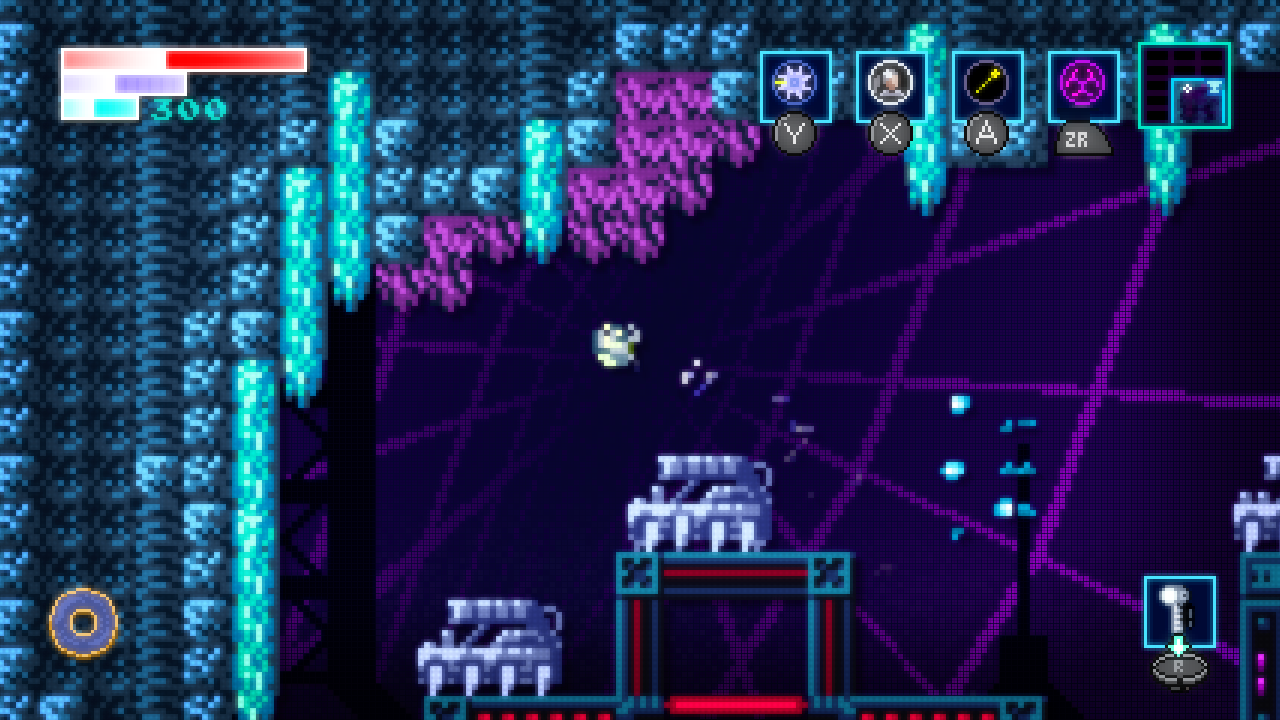
Underpinning this vision of a buoyant new world is a soundtrack that, in the overworld, eschews pumping synth sounds and makes way for something much more conventional. Each area has a theme that’s expressed through traditional instrumental sounds and punctuated with wild, undulating vocals; they perfectly describe an untamed land that is deeply primal beneath the intrusion of a robotic menace. The Breach offers more familiar musical fare for fans, with retro chip-tune and synthwave music matching up with the throwback aesthetic perfectly. And while the ambient sounds don’t quite reach the heady heights of the soundtrack, they certainly don’t come as a disappointment. The only minor issue I had with the sound was actually the default equalisation; I played the game with a headset and found that when the music was at a comfortable level, the firing and damage sounds were absolutely deafening! It’s a small thing that’s easily fixed with a little tweaking in the options, but undoubtedly stood out in my playthrough.
Metroidvania games live and die by the myriad of abilities that are available to collect along the way, and Axiom Verge 2 does a great job of making even the most basic of upgrades feel like a bold jump in your ability to explore. Indra gains new abilities by finding and destroying urns that are hidden throughout the world, releasing ancient beings known as ‘Arms’ who have been trapped inside. New abilities come in a flurry, especially early on, and it feels like the map grows exponentially with every hour of gameplay. The drone from Axiom Verge makes a welcome return (albeit in an altered fashion), and the ability to hack parts of the world around you, including enemies, was a personal favourite of mine. With all that said, I was sad that some of the upgrades quickly fell by the wayside as they were overridden by more useful and broad reaching abilities. Some of the puzzles are deliciously thought out, but I think there was definitely a missed opportunity in utilising some of the lesser used abilities more often, particularly later in the game.
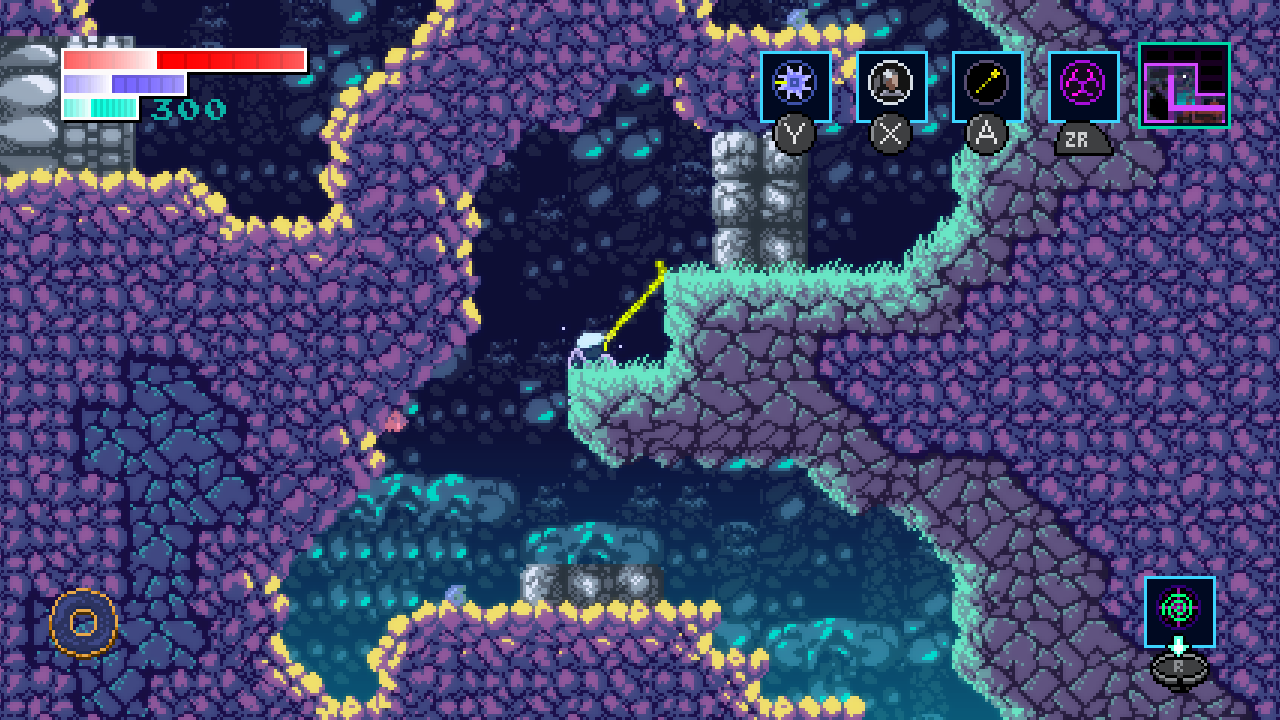
The game regularly invites you to retread your path and excitedly discover new areas, and the fast travel ability certainly helps in mopping up parts of the map that have gone unexplored. Speaking of the map – while it remains a primitive nod to the earlier Metroid games and is far from a modern guide, it’s been much improved from the original title, with unlimited reminder tags coming as the biggest upgrade, alongside the introduction of the compass. In a genre defined by hidden upgrades, having a compass to nudge you in the right direction and help you experience everything the game has to offer is a very welcome one.
About the only area where the game sees a regression from the original is the combat, where both the melee and ranged confrontations offer little in the way of variety. For me, a good metroidvania is more about exploration and uncovering secrets than the enemies you fight so I didn’t have a huge issue, but there are certainly players who will want more in the way of a challenge from the enemies. I have to admit that I was disappointed that the boss battles which were so very, very awesome in Axiom Verge were decidedly less impressive this time around. In fact, once you’ve collected a few health upgrades and some consumables, you can easily stand alongside even the biggest enemy and spam ‘attack’ until he explodes in a shower of pixels. It is possible to overcome these limitations by utilising the game’s damage multiplier options to make things more difficult, but it feels like things are a little on the simple side playing with the default settings.
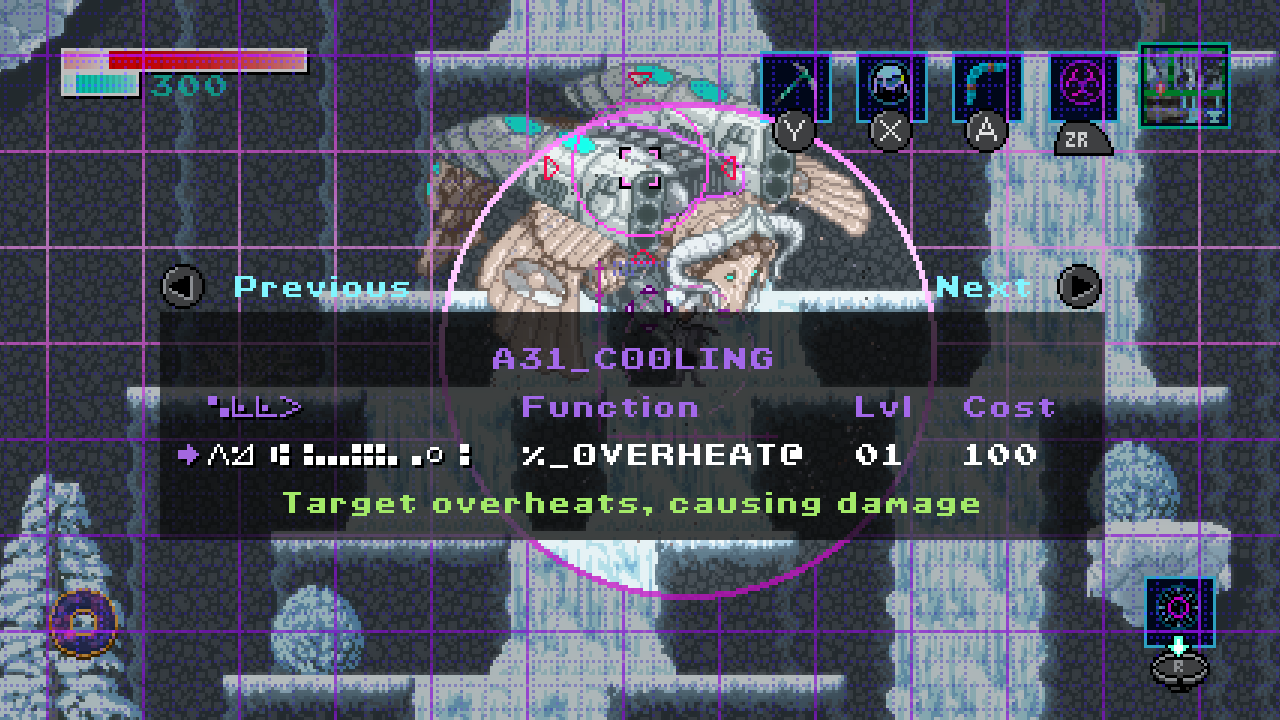
The plotline to Axiom Verge 2 is played out through short, characterful cutscenes and gleaned from various notes that are stashed around the map, oftentimes following many of the tropes seen in other prequels. I could see that many of the events were written with a destination in mind, and it sometimes feels just a little constrained by Happ’s wish to tie the two games together. There’s also a lot of subtle references to the original game that might escape less attentive players, and while you don’t have to have played the first game in order to play the second, I could definitely appreciate the finer details of the story having played the original Axiom Verge beforehand. There’s a moment right at the end that made me grin like the Cheshire Cat when the penny dropped!
The lore uncovered throughout the game is deep, plentiful and very well written, but can oftentimes be difficult to follow. You’re introduced to a lot of different characters, races and places, all with otherworldly names that can easily be confused, and the random order in which you collect the snatches of data doesn’t help continuity either. The game doesn’t hold your hand in piecing the story together either, asking that you interpret the meaning of events in every note instead of spelling absolutely everything out for you. This feels like a very ‘adult’ method of storytelling that’s not often seen in video games, and was an approach that I personally appreciated, but one might not be to everyone’s taste – especially as the game reaches it’s crescendo.
All-in-all, I was thoroughly impressed by everything Axiom Verge 2 offered and would probably have devoured the entire thing in one sitting had adult life not gotten in the way. Yes, the combat could have used more variety and the story was a little head scratching at times, but that’s entirely worth it for the masterclass in retro graphics and sound that you get in return, along with some thoroughly enjoyable world building and exploration too. I’m in awe of the work Thomas Happ has put out for a second time – for a one-man developer to achieve a single game at this standard would be impressive, but to create a follow-up that’s on the same level… out of this world.
